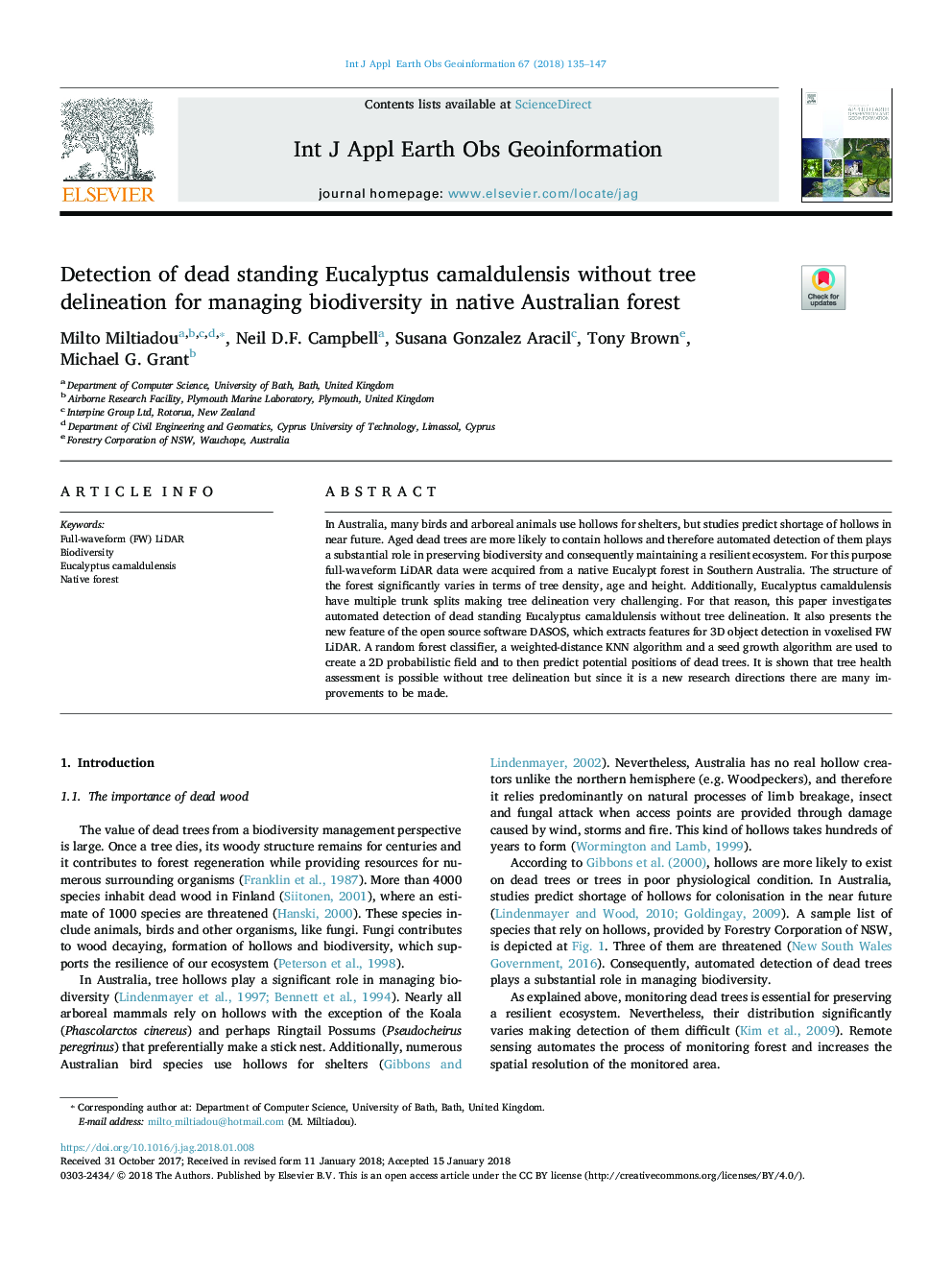| Article ID | Journal | Published Year | Pages | File Type |
|---|---|---|---|---|
| 8867936 | International Journal of Applied Earth Observation and Geoinformation | 2018 | 13 Pages |
Abstract
In Australia, many birds and arboreal animals use hollows for shelters, but studies predict shortage of hollows in near future. Aged dead trees are more likely to contain hollows and therefore automated detection of them plays a substantial role in preserving biodiversity and consequently maintaining a resilient ecosystem. For this purpose full-waveform LiDAR data were acquired from a native Eucalypt forest in Southern Australia. The structure of the forest significantly varies in terms of tree density, age and height. Additionally, Eucalyptus camaldulensis have multiple trunk splits making tree delineation very challenging. For that reason, this paper investigates automated detection of dead standing Eucalyptus camaldulensis without tree delineation. It also presents the new feature of the open source software DASOS, which extracts features for 3D object detection in voxelised FW LiDAR. A random forest classifier, a weighted-distance KNN algorithm and a seed growth algorithm are used to create a 2D probabilistic field and to then predict potential positions of dead trees. It is shown that tree health assessment is possible without tree delineation but since it is a new research directions there are many improvements to be made.
Related Topics
Physical Sciences and Engineering
Earth and Planetary Sciences
Computers in Earth Sciences
Authors
Milto Miltiadou, Neil D.F. Campbell, Susana Gonzalez Aracil, Tony Brown, Michael G. Grant,
